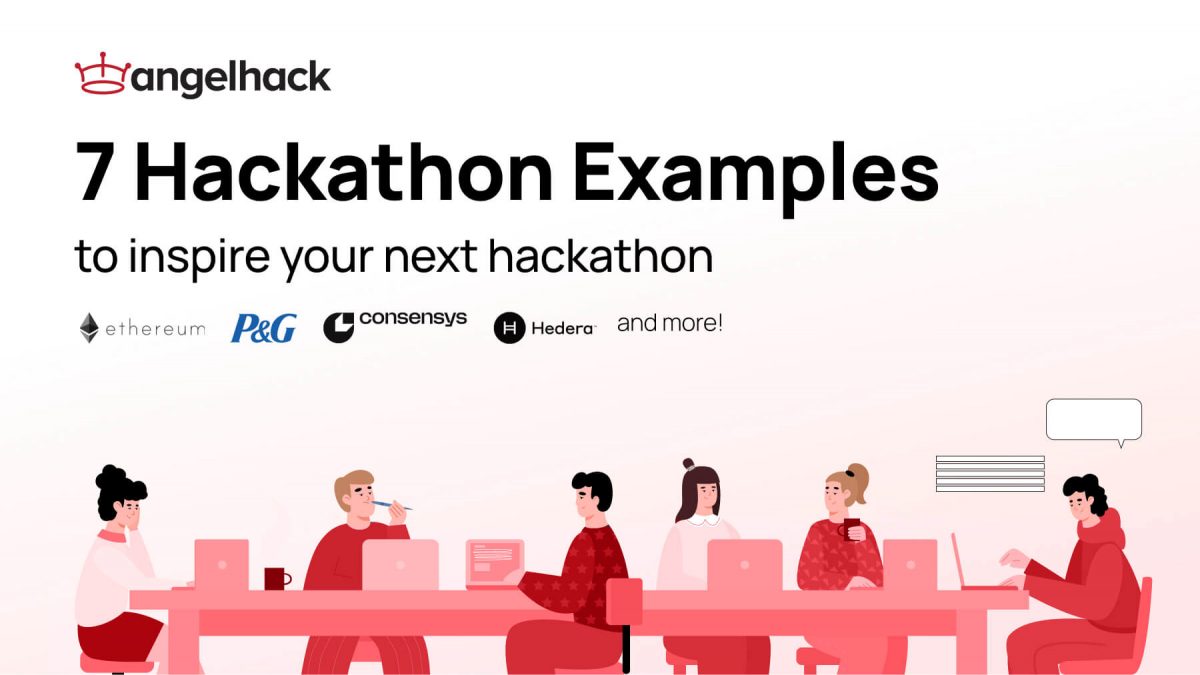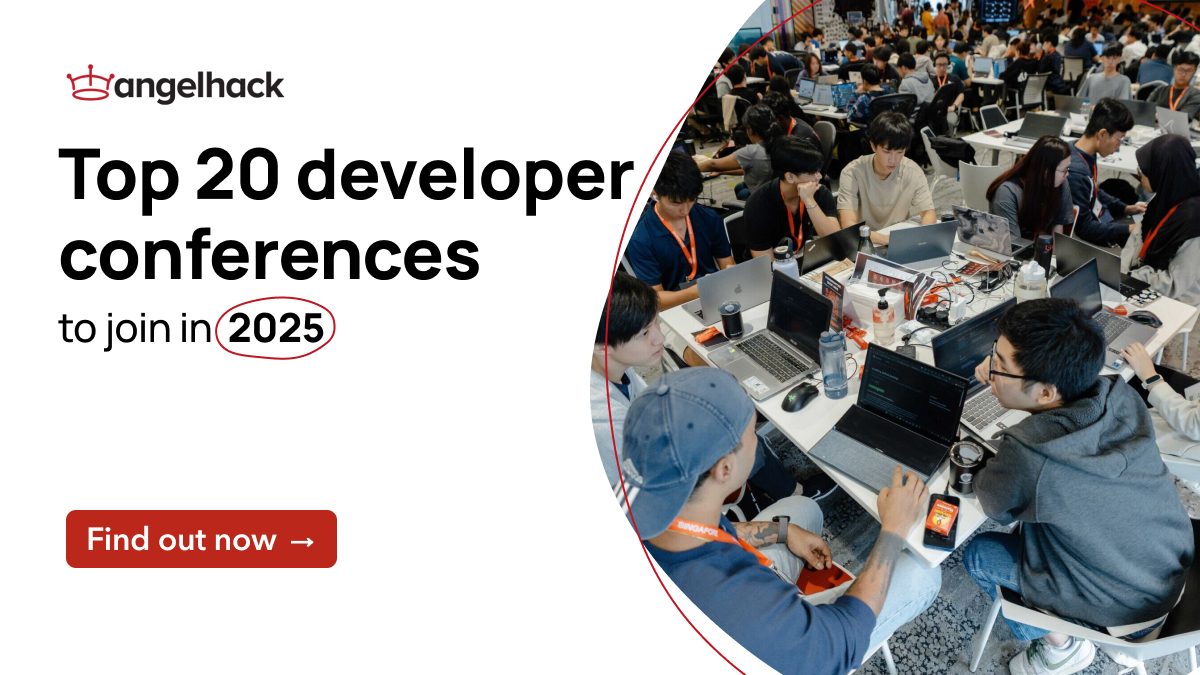The Definitive Hackathon Sponsorship Guide
A hackathon brings entrepreneurs, developers, and designers together to find solutions in tech and innovation using software development, design, API integrations and more. It provides participants with space whether it is virtual or in person to come together and form teams to code a unique solution around an idea or problem as apps and websites. AngelHack’s Global Series hosts hackathons all around the world creating a global community for innovation. Many organizations are finding it a cost-effective way to:
- raise brand awareness and/or change brand perception
- discover creative and innovative uses of their technologies
- support emerging entrepreneurial ecosystems
- contribute to a wide spectrum of business objectives
- reduce R&D costs
- prototype new channels & mobile apps
- build visibility and community
- reduce time and cost to market
- identify new revenue or service opportunities
- engage new partners and jump-start new partner ecosystems
- improve both employee and customer experiences
- evolve company culture
- engage new business stakeholders
- retain and attract new hot talent (better than traditional tech interviews)
- super targeted PR
Before the Hackathon
Why are you sponsoring?
Companies sponsor hackathons for all sorts of reasons, but typically there are three main goals:
- Recruiting
- Brand Exposure
- Product Feedback
If your goal is recruiting, what better way to source fantastic candidates for an open technical role than to engage with potential candidates in the wild. By being at a hackathon, you get to showcase the exciting technology and culture of your company, but you also get to see a spectrum of candidates face to face, witness their team dynamics and their ability to prototype ideas and technology in a very tight timeline. Hackathon attendees tend to be intrinsically motivated, the type that love to evolve their skills on the ground, and dig into problem-solving challenges: all aspects of amazing employee DNA.
Recruiting Example KPI: Find 5 candidates interested in a role at our company.
If your main goal is around marketing and branding, hackathons are also the perfect place for that. Live event marketing is expected to boom in 2019, and it’s known that immersive experiences built around a brand are much stickier than walking past a billboard with your logo on it or just another static stall at a conference.
By working directly with evangelists from your company, there is much more opportunity for your brand and product to make a lasting impression.
If you have an API you’re trying to promote, this is also a great opportunity to integrate it into attendee projects (by working it into your sponsor challenge). A lot of partners will showcase what participants have been able to do with their technology in 48 hours (in an article, short video or even at a conference) spotlighting the potential of their product while building a new following.
Brand Exposure Example KPI: Sign up 100 new emails to the email mailing list.
And finally, the last main goal for a company sponsoring a hackathon is the opportunity for direct product feedback. Think of the hackathon like a much more interactive focus group, you’ll get to work directly with the developers who are implementing your technologies and see what works, what doesn’t, and hear from them in moments of joy and frustration. It’s pure, authentic feedback without any filters.
Direct Feedback Example KPI: Get 20 feedback forms filled out (incentivize with a raffle or some sort of small prize).
What should you bring to make you stand out?
Having a branded banner at your table is the bare minimum.
Swag is a simple marketing advantage that can immediately connect you with the attendees so you are likely to get engagement. It increases your brand recognition and allows the attendees to become familiar with your brand. The more items circulating with your name or logo the more people will recognize your brand.
Swag can come in forms of stickers (a huge deal at hackathons), water bottles, t-shirts, bags, camera covers, temporary tattoos, hackathon hygiene kits and more. Partners can also stand out by sponsoring an activity (post demo happy hour, midnight snack, yoga/meditation) or have a station for a much-needed break with a massage chair, photo booth, interactive games or offer fresh goodies like juice shots.
How do I create a ‘challenge’?
Create a challenge that intrigues the hackers, allows creative freedom and has the potential for impact. Align the hackathon challenge to strategic business objectives and dive into internal pain points where you want a whole spectrum of fresh thinking. Some partners have said they got more in one hackathon weekend than in months of expensive R&D.
What makes your tech adaptable and different? Encourage the coders and designers to inspire innovation which lets you leverage your tech in imaginative new ways. If you are including APIs, data or other tools, ensure they are easily and consider incentivizing attendees to integrate your API into their prototype (for instance by requiring integration to receive the prize).
The challenge should solve a solution that your company needs and spark valuable ideation, encourage experimentation & appeal to your target demographics. Have a structured theme to give participants guidance and excitement so they have a basis to work with workshops can optionally be added to bring in expertise, discuss pain points, encourage design thinking.
At the Hackathon
What’s an appropriate prize?
Prizes definitely play a role in attracting top talent to participate, but it’s not always as simple as “Fund Funneling.” Many technologists are motivated by unique experiences, gadgets, career enhancements & opportunities to use their skills for impact. We have seen diverse prize packages that have included everything from: cash, drones, iPads, mentoring sessions, a private lunch with executives, PR features, travel to present winning ideas at global conferences, guaranteed accelerator entry/interviews, coworking space, design agency credits, a dedicated agile team or support to build a winning idea into a full product or startup post-hackathon.
Think of a prize distribution that will benefit both your company and the attendees. Offer up a prize to the team that best integrates your API into their design and ask for feedback with Many companies offer a prize to the team that best integrates their API into their design and ask for feedback. For example, if your KPI is designed for recruiting, offer up a prize to a best overall UX or something that fits what you’re looking for. This gives you a chance to communicate with the teams and engage with those who impress you. These prizes incentivize the attendees to use your API and will help you simultaneously reach the goals in your KPIs. Also, many companies wish they had designated multiple prizes as during demos they have many teams that impress them making picking only one winner very difficult!
What About Technical Support?
Set up guides, online resources and connect with participants through Slack or Twitter. Partners often provide on-site technical mentors, online documentation, and/or a Q&A session for anyone who gets stuck during the hackathon. A pre-hackathon virtual webinar is another option to gage questions or any potential technical issues early.
A good rule of thumb is to also have a separate Slack channel or Twitter dedicated to hackathons where participants can ask questions on the technology and API in real time while at the hackathon.
How do I approach attendees?
This part is easy. At the start of the event, hackers will flock to the sponsor tables to pick up some swag and learn more about your technology. After that initial rush, things slow a bit allowing you to venture out and mingle directly with teams at their table.
Always try and have at least one person by your table, and keep track of which teams are tackling your challenge so that you can give them support as needed. Workshops are another valuable engagement point.
How do I stay awake?
Hackathons can get pretty hectic and self-care can slowly stop being a priority for attendees and partners alike. Create a schedule for your team so everyone has breaks. Hackathons are typically overnight so plan ahead.
When you go and grab a drink or snack from the food area, strike up a conversation with an attendee. It’s easier as you’re not interrupting them during their focus or debugging sessions, and you can get some feedback on their experience with your APIs or just learn more about them.
After the Hackathon
The hackathon is over, now what?
After the hackathon has ended, take a deeper look at the data you collected from the attendees. If you collected any contact info or any form of feedback, make sure you have a plan of action and next steps to continue engagement. A starting point can be a thank you email with imagery or a survey.
Follow up with your sponsorship account manager who will provide you with more metrics and data on the event itself. On top of the data that you have collected, these additional insights will give you a clearer picture of how you have achieved your KPIs.
{{cta(‘536d4e57-ac6c-4c82-844b-9b93149255c6′,’justifycenter’)}}


